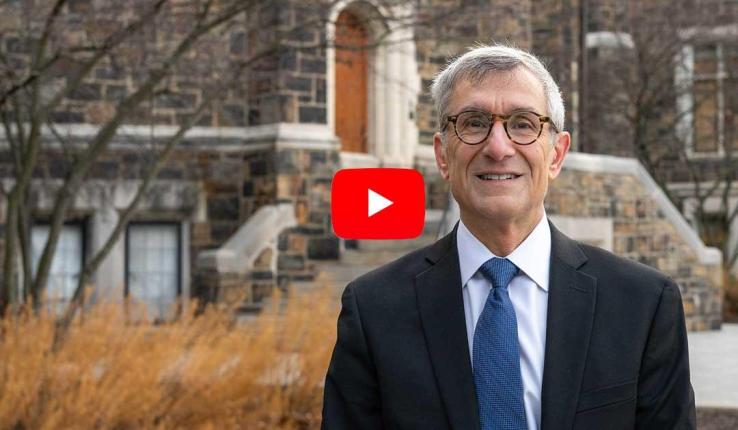Every Tuesday, their model generates forecasts that are then compiled, with the CDC using the data, along with other flu forecasting data, to present these forecasts to the public.
McAndrew identified three of the most significant results to come from his research thus far. First, his work highlighted that crowdsourced human judgment can produce well-calibrated forecasts of the number of incident hospitalizations due to influenza at the state level. Second, his research suggested that using a model that combines traditional surveillance data with human judgment may produce more accurate forecasts of the trajectory of influenza. Third, and most importantly, according to McAndrew, “Forecasting influenza is difficult.”
Since beginning his work on flu forecasting at Lehigh in 2020, McAndrew’s relationships with researchers, public health professionals and public health organizations have been crucial to expanding the impact of his research.
In 2020, he conducted an experiment that polled experts in public health, epidemiology and forecasting infectious diseases on their own predictions about how the COVID-19 pandemic would unfold. The experiment demonstrated the importance of combining and synthesizing expert predictions, especially in areas where there isn’t enough data to support computational modeling, he said.
“The forecasting and modeling community is a close-knit group of people who are passionate about improving public health associated with influenza,” said McAndrew, “And this experiment strengthened my connections with other forecasters.”
In addition to his connections with colleagues, McAndrew’s relationships with public health organizations have evolved to further support his research. The CSTE and CDC have supported him, along with other infectious forecasters, by hosting workshops and conferences and acting as organizers for many topics related to forecasting.
McAndrew considers the Influenza Division of the CDC as close collaborators in his modeling work. Over the season the CDC offers weekly support, alerting him if a forecast for a specific location may be miscalibrated, sending updates on the quality of incoming hospitalization data, and working to coordinate meetings for modeling teams.
Beginning at a CSTE conference, McAndrew developed a collaboration with the Pennsylvania Department of Health (PADOH). Their partnership has grown into a closer collaboration associated with forecasting weekly incident cases of lab-confirmed influenza for the state.
“Collaborators at the PADOH have played a major role in giving my work purpose,” he said. “It is important to me that I use my skills and training in applied mathematics and statistics to improve the health of others.”
Helping support the influenza response in Pennsylvania is an important mission of the Computational Uncertainty Lab. PADOH helps McAndrew and his team improve their work by helping them understand what information is most important to communicate to public health officials to improve decision making, what information is not important, and what subtleties related to surveillance can be incorporated into models.
McAndrew reflected, “The collaboration between public health officials and influenza forecasters is, to me, what gives my work value.”






